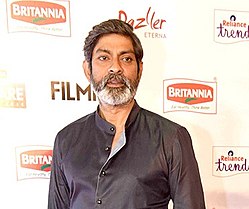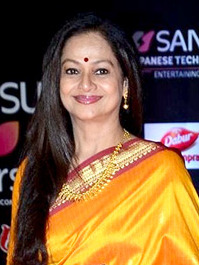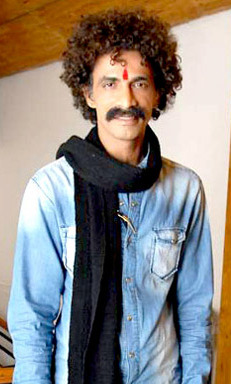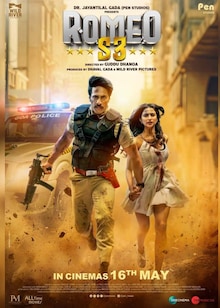

In a lawless town plagued by corruption and fear, Bharathi believes even God avoids this place. Jaat arrives, determined to fight the injustices and save the villagers from the violence and greed that surround them. With courage and resolve, he takes on the challenge to restore justice in this dark land.
April 10
2025
Release Date
Hindi
Language
38 minutes
2 hours
Running Time
Cast


Sunny Deol


Randeep Hooda


Saiyami Kher


Vineet Kumar Singh


Jagapathi Babu


Zarina Wahab


Swaroopa Ghosh


P. Ravi Shankar


Ajay Ghosh


Makrand Deshpande


Mushtaq Khan








Regena Cassandrra








Prashant Bajaj








Prithviraj








Temper Vamsi








Suhas








Srikanth Iyengar








Ayesha Khan
3.0
Average Rating
The above-mentioned average rating is based on the derived ratings of multiple review platforms
OH Review


Review of "Jaat"
Plot
"Jaat," directed by Gopichand Malineni, unfolds in a remote coastal village where terror reigns supreme, thanks to the ruthless criminal Ranatunga, played brilliantly by Randeep Hooda. From the opening scene, it’s clear that the film doesn’t shy away from its intentions: to present a hero-driven saga that captivates its audience. The film kicks off with a sense of drama as it delves into the harsh realities the villagers face under Ranatunga's oppressive rule. The narrative thickens when a mysterious stranger arrives on the scene, bringing with him the promise of rebellion and justice for the oppressed. This setup allows the film to explore themes of tyranny, resistance, and redemption wrapped in a classic messiah story arc familiar to, yet always engaging within, the action genre.
The filmmakers employ a non-linear storytelling approach, using flashbacks to build tension and display the horrors faced by the villagers. This method not only keeps the audience engaged but also helps to develop the narrative in a refreshing manner. As the plot progresses, the impact of Ranatunga's tyranny is depicted in visceral detail, convincing the audience of the stakes at play. However, while the first half is packed with adrenaline-pumping action, the second half tends to lean towards predictability, following a well-trodden path of classic revenge tropes. This is where the narrative risks losing its grip, as viewers may find themselves waiting for the predictable punchlines and conclusions.
Adding to the chaos and drama is the sub-plot involving the political scenario around the villagers, hinting at larger issues like displacement and corruption. These plot threads could have added depth and urgency to the narrative but often feel hurried and underexplored. Despite the film's significant ambition, its execution leans toward the familiar and safe, diluting the impact it could have had by pushing socio-political commentary further. Overall, while "Jaat" presents an engaging premise with its intriguing set of characters and their conflicts, it occasionally settles for clichés instead of striving to break new ground. The plot succeeds in being entertaining, but it lacks the innovation and depth that standout films often possess, making it an enjoyable, if slightly forgettable, rollercoaster of action.
Acting
The performances in "Jaat" are a true highlight, bringing the over-the-top narrative and larger-than-life characters to life. At the center of it all is Sunny Deol, who continues to charm and captivate audiences with his charisma and powerful screen presence. In this film, he embodies the archetypal action hero, wielding his iconic catchphrases and delivering dialogue with the conviction only he can summon. His ability to blend warmth and rage is nothing short of remarkable, reminding viewers why he’s been a beloved figure in Bollywood for decades. Deol shines brightest during intense moments, ensuring the audience feels every punch he throws and every injustice he confronts.
Randeep Hooda’s performance as the villain Ranatunga is equally noteworthy. He brings an unsettling intensity that makes his character compelling. With a chilling ability to instill fear and despair into his on-screen victims, Hooda proves he is more than just a match for Deol’s hero. The complex motivations behind Ranatunga's brutality are explored through his performance, revealing layers that add depth to the otherwise classic villain role. His portrayal brings a certain gravitas to the narrative, making the audience both intrigued and repulsed by his actions. Sadly, some characters, particularly the female roles, feel underwritten. Regina Cassandra as Bharathi, Ranatunga’s wife, does her best to showcase depth, but her character remains stuck in the shadows, creating a missed opportunity for exploring female strength alongside male heroism.
Saiyami Kher attempts to portray a fierce police officer, yet her character lacks the necessary development to resonate on any meaningful level. Another unfortunate choice was the portrayal of Vineet Kumar Singh as Somulu, who adds necessary comic relief but also comes off as a distraction with his over-the-top antics. The remainder of the supporting cast, including the likes of Makarand Deshpande in a limited role, could have taken more space to shine. Overall, while the leading performances soar these characters live and breathe the action-packed chaos, it’s the willful absence of well-crafted female roles that deserves more focus in the otherwise male-driven narrative of "Jaat."
Cinematography
Visually, "Jaat" impresses, showcasing a rugged beauty through its cinematography that captures the essence of both the landscapes and the chaotic energy surrounding the narrative. Shot mostly in the lush settings of Sri Lanka and rural India, the cinematography by the talented team ensures audiences are immersed in the environment that shapes the characters’ lives. Each frame feels purposeful, and the film’s action sequences are shot with a flair that mirrors the bravado of the characters themselves. Slow-motion shots of Deol delivering crushing punches or Hooda looming menacingly over his victims emphasize their power dynamics, keeping the audience glued to the screen.
Beyond the settings and action, the film plays with light and shadow, reflecting the internal struggles of its characters. These choices help enhance dramatic moments, aiding in the creation of tension during pivotal scenes. The brutality showcased in the film is accentuated well, capturing the visceral nature of the storyline. However, while the visuals are generally dynamic, there are moments where the relentless action sequences overshadow the need for subtler framing, leading to a disconnect in pacing. Some viewers may find it overwhelming, with rapid transitions and excessive stylistic choices diluting the emotional impact intended.
The use of color and lighting also ties into the film's themes of triumph and tragedy, bringing forth a cinematic experience tailor-made for adrenaline seekers. The handsome production design complements the vibrant action, emphasizing the dichotomy between the idyllic village and the harsh realities imposed by tyranny. In conclusion, the cinematography of "Jaat" is largely a celebration of the action genre, excelling in creating visually stimulating scenes that resonate with the traditional storytelling of heroism and villainy, but at times veering too far into stylistic excess.
Direction
Gopichand Malineni's direction in "Jaat" marks a robust, if sometimes formulaic, debut in Hindi cinema. Understanding the weight of balancing action with narrative urgency, he has curated a film that undeniably caters to fans of the action genre. Malineni's flair for crafting intense moments shines through spectacularly in the first half, where each sequence builds upon the previous one, creating a palpable tension that keeps viewers guessing. It’s clear he aims to infuse the film with the grandiosity characteristic of South Indian cinema while ensuring the action-centric narrative resonates with a broader audience.
However, the film's second half reveals some shortcomings in direction, where pacing becomes problematic. The plot, which initially holds such promise, begins to falter as clichés seep into the dialogue and routine action sequences replace moments of suspense or twists. Though Malineni demonstrates an understanding of how to create pulse-pounding action, the risks he takes often feel overshadowed by familiar storytelling formulas, resulting in a slightly predictable progression. Despite the action bombast, there remains a gap in exploring deeper themes, especially those concerning gender, which, when touched upon, often come across as either heavy-handed or insensitive.
The film’s structure and pacing often reflect a hesitation to innovate beyond the confines of traditional action tropes. While the film manages to sustain momentum, the payoff feels less rewarding as it hinges on well-known formulas rather than forging new paths. Gopichand's creative choices—such as the mix of humor within heavy action—show his capacity for engagement, but it’s in the nuanced storytelling that the film lacks substance.
Conclusion
In conclusion, "Jaat" is an action-packed drama that doesn’t skimp on thrill or entertainment, especially for fans of Sunny Deol and the South Indian action genre. With a captivating start, visually striking cinematography, and solid performances, the film delivers a pulse-pounding ride of high stakes and intense conflict. Yet, beneath the flashy veneer, "Jaat" navigates familiar ground, sometimes leaning too heavily on recognized tropes to fully explore its potential.
Despite its flaws, the film succeeds as an enjoyable spectacle. The chemistry between the leads, particularly Sunny Deol and Randeep Hooda, delivers riveting scenes that remind audiences why cinematic clashes between heroes and villains can be so exhilarating. Gopichand Malineni has crafted a film that resonates with nostalgia while trying to embrace contemporary storytelling techniques, although it sometimes stumbles along the way.
For anyone looking for a robust action film filled with one-liners, dramatic moments, and the charm of a seasoned action hero, "Jaat" is sure to satisfy. As it signs off with explosive spectacles reminiscent of earlier Deol films, it might not be the game-changer many hope for, but it’s definitely a memorable trip grounded in tradition and fervor. Ultimately, "Jaat" is worth watching for its unwavering energy and the entertainment it promises, but audiences may crave a bit more depth and sensitivity interwoven within its loud and lively narrative.
Share this review
The Great Reviews
India Today
Sana Farzeen
Times of India
Rediff
NDTV
More like this
Mission: Impossible – The Final Reckoning
In Mission: Impossible – The Final Reckoning, in "Mission: Impossible - The Final Reckoning," Tom Cruise takes on his most daring mission yet. He join...


